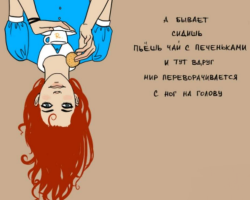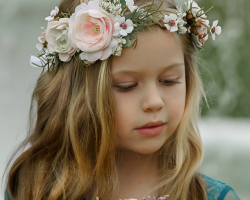The nervously mental development of children at different ages. What should the child be able to do in the process of his development?
Content
- Diagnosis of nervous and mental development
- Nervous and mental development map
- Criteria of nervous and mental development
- Nervous - mental development table
- Assessment of nervous and mental development
- Nervously - mental development of children up to a year
- Nervous - mental development of a child 1 and 2 years old
- Nervous - mental development of a child 3 and 4 years old
- Nervous - mental development of children 5 and 6 years old
- Nervous - mental development of adolescents
- Video: Nervous-psychological and physical development of a child of the first year of life
The task of the parents includes the help of the timely development of the child. Education includes not only the introduction of developing games, but also diagnosis. This makes it clear what goals have been achieved, and what else needs to work on.
Diagnosis of nervous and mental development
At school age, teachers are diagnosed. A small child develops surrounded by parents, therefore it is they who should be diagnosed with development. It is important here to impartially analyze the test results and highlight success or delay.

All diagnostic systems come down to normal communication. During the conversation, adults ask leading questions to get an answer. In some cases, the answer may be extraordinary, it must be considered before making a decision.
In the process of communication, it is important that the child feels natural and natural. The accuracy and correctness of his answers depends on this. A sincere reaction to questions gives the most accurate diagnostic results.
Nervous and mental development map
For the systematization of nervous mental development, all diagnostic data should be entered into the card. All that the child knows how to fix with the help of the “+” sign, inaccessible skills are noted using the “-” sign. Dark cells indicate that at this age the skill is not yet available.
| Child skills | Age | ||||||
| 10m. | 1g.3m. | 1g.6m. | 1g.9m. | 2g. | 2g.6m. | 3g. | |
| Physical abilities | |||||||
| Running opportunities: | |||||||
| - He runs uncertainly | |||||||
| - He runs well | |||||||
| - switches to running or walking at the request | |||||||
| - can change the pace of running, direction on the go | |||||||
| Walking opportunities: | |||||||
| - He walks himself | |||||||
| - rises on several steps | |||||||
| - rises along the children's ladder with a step with alternation of the legs, descends putting the leg | |||||||
| - walks on a narrow surface without stumbling | |||||||
| - knows how to keep balance | |||||||
| Work with the ball: | |||||||
| - can roll or throw a ball | |||||||
| - pushes the ball into the indicated gap (gate) | |||||||
| - throws the ball with two hands up or down | |||||||
| - throws the ball, trying to get into the target no higher than its height | |||||||
| - Trying to catch the ball with two hands | |||||||
| - deftly throws the ball | |||||||
| Speech function | |||||||
| Understands the words: | |||||||
| - understands common simple words | |||||||
| - understands the words describing the environment | |||||||
| - shows parts of the linden during the question of parents | |||||||
| - understands small tells. Answers the questions: “Who?”, “What?”, “Where?” | |||||||
| - understands the story of an adult in which there are no events that the child experienced | |||||||
| Own speech: | |||||||
| - makes simple sounds | |||||||
| -builds a simple syllable (ma-ma, b-ba) | |||||||
| - accompany the games with words | |||||||
| - builds sentences from three words | |||||||
| - builds sentences from four words and more | |||||||
| - He asks “where?”, “Where?”, “How?” | |||||||
| - builds complex sentences | |||||||
| - knows about 1,500 different words | |||||||
| Independence | |||||||
| - He eats thick food | |||||||
| - He consumes half -liquid food with a spoon | |||||||
| - Asks to the toilet | |||||||
| - tries to fix untidiness in clothes | |||||||
| - can take off some things | |||||||
| - uses a handkerchief | |||||||
| - Dresses, but not buttoning buttons | |||||||
| - Helps makes simple household items | |||||||
| - completely dresses himself | |||||||
| - knows how to comb hair | |||||||
| Social orientation | |||||||
| - shows vivid emotions to parents | |||||||
| - adopts the feelings of other children (if everyone laughs, also starts) | |||||||
| - shows different emotions with slow and quick music | |||||||
| - Studies the pictures | |||||||
| - To the music repeats familiar movements | |||||||
| - imitates the emotions of adults | |||||||
| - Emotional speech appears in games | |||||||
| - sympathizes if the child cries nearby | |||||||
| - distinguishes its emotional state | |||||||
| - wants to be good, be proud of parents | |||||||
| - worries when parents leave | |||||||
| - the first signs of independence appear | |||||||
| Interaction with surrounding objects | |||||||
| - puts the rings on the rod | |||||||
| - Grits with a pencil on paper | |||||||
| - Playing with cubes, builds turrets | |||||||
| - can wear large beads on the rope | |||||||
| - builds simple structures from cubes | |||||||
| - draws horizontal and vertical lines | |||||||
| - Successfully collects a nesting doll | |||||||
| - builds tall towers from cubes | |||||||
| - kneads plasticine in his hands | |||||||
| - Makes simple applications | |||||||
Criteria of nervous and mental development
The definition of the level of development is considered comprehensively, given the important criteria:
- physical abilities
- speech function
- independence
- social orientation
- interaction with surrounding objects
Nervous - mental development table
The general development of the child is reduced to the acquisition of certain skills to the corresponding age. If the development card considers deeper every skill, then the table presented is a reminder that the child should be able to at a certain age.

Assessment of nervous and mental development
The results of the child’s development are subject to evaluation by adults. At the same time, there are four stages that form the psyche of a person.

- The first stage - during the first year of life, the child receives the main skills of movement. The period is characterized by the mastery of fine and large motor skills
- The second stage is aged from one year to three years, the child learns to consciously respond to the outside world, interacting with the environment. The period is characterized by sensory development
- The third stage is the longest stage (from 3 to 12 years). Individual thinking develops. More and more often the actions are performed after preliminary reflection
- The fourth stage is from 12 to 14 years. At this time, the full formation of the child’s psyche occurs. Own thinking is distinguished. The period is characterized by a full -fledged formation of an individual personality
- Up to 15 years, a child is noted two crisis age, which require special attention and approach from the parents. The first crisis may occur in 2 - 3.5 years, the second in the period from 12 to 15 years
- The first crisis is associated with the rapid formation of the psyche and physical data, which leads to a load on all life -supporting organs. The second age is associated with a change in the inner glands, puberty
Nervously - mental development of children up to a year
During the first year, the child gradually forms his consciousness. The beginning of development occurs with maintaining a moving object in the field of view. Then he begins to listen to loud sounds, to distinguish between the voices of his parents.

- At two months, he himself pronounces some sounds. Then physical development begins, the child can raise his head lying on his stomach, hold it for a long time
- At four months, a child often has a manifestation of joy when he sees mom and dad. Then begins to distinguish relatives and friends from strangers
- Half -month age requires small motor skills, holding the toy in the hand, shifting it. Then the motor function develops, the child begins to actively crawl
- After he begins to imitate his parents, loves to play for a long time. At about nine months, it can begin to walk uncertainly, recognize objects around. Over time, learn to overcome small obstacles, climb a sofa or chair.
- Closer to the year he recognizes parents in photographs, with interest considers everything new
Nervous - mental development of a child 1 and 2 years old
At this age, the baby successfully masters all forms of movement, from crawling on his knees to skillful walking on his feet. The development test includes the ability to step through small objects located on the floor. In this case, the step should alternate both the right and left leg, and not begin with any one.

In reality, the child performs much more active actions. It climbs to everything that is not much higher than him. It can be either a small ottoman or a large washing machine.
The neuropsychic development of young children is characterized by the ability to remember words, to make a good vocabulary, about 200-300 words. A child can by heart read a poem or retell an excerpt from a small story. Nervously mental development includes a huge absorption of information. Children can hear any phrase and repeat it in a few days.
Nervous - mental development of a child 3 and 4 years old
All acquired skills are enhanced. Several new ones are added. The child can eat on his own, the ability to serve himself is more manifested. Washes hands with soap, can insert the key into the door lock and scroll it.

The mental situation develops more strongly. He makes simple conclusions, learn to analyze everything around. Often he can think in advance his actions or plans. At this time, he should be able to communicate well and articulate.
Closer to four years of age, he tries to be independent more. It can go to the toilet himself, when necessary, dress and shoe. Mental development is the ability to focus on the goal, to control some of their actions and desires. Highlights the area of \u200b\u200bfavorite classes.
Nervous - mental development of children 5 and 6 years old
This period characterizes the child as a thinking person. Before the start of any game, participates in the distribution of roles, plans what will happen and how it will look.

- During drawing, it pays more attention to trifles, drawing in detail some elements. Images become more complex and have a logical meaning
- Finding in kindergarten develops the ability to communicate with peers and older people. Learns to be part of the team, interact with all surrounding people. During this period, personal sympathies appear, the child identifies friends among all the guys who are in the group
- The nervously mental development of a preschool child is the ability to control his actions, to perform the work provided, even if it does not like it. Can competently conduct a dialogue, draw up coherent sentences filled with specific meaning
Nervous - mental development of adolescents
Teenagers are not yet adults, but you can’t call them children. This period is often called teenage and turning point, when a person forms his puberty, the construction of the inner glands changes. In boys, vegetation appears on the face, a voice breaks. In girls, the first menstruation appears, the shape of the hands changes, the buttocks are rounded, the mammary glands are increased.
On the mental side, adolescents are increasingly behaving like adults. But sometimes they show their children's character. The first signs of independence from parents appear, which can be expressed in different forms, sometimes unpleasant for parents.

- During this period, adolescents are quite vulnerable, they still comprehend life laws, therefore, the concept of “teenage maximalism” most often appears. Thinking in which moral standards or ideals are clearly overstated. The formation of the personality, the formation of the psyche occurs
- At this age, the first sexual desire occurs, adolescents pay more attention to their appearance. Physical development occurs especially quickly. Children with slight growth in this time can significantly add and stretch
- Recently, an acceleration process has been noted - rapid growth and puberty of children. Moreover, mental development remains at the same level. Therefore, adolescents need to carefully monitor and adequately respond to their behavior, helping to get stronger and firmly form a personality






